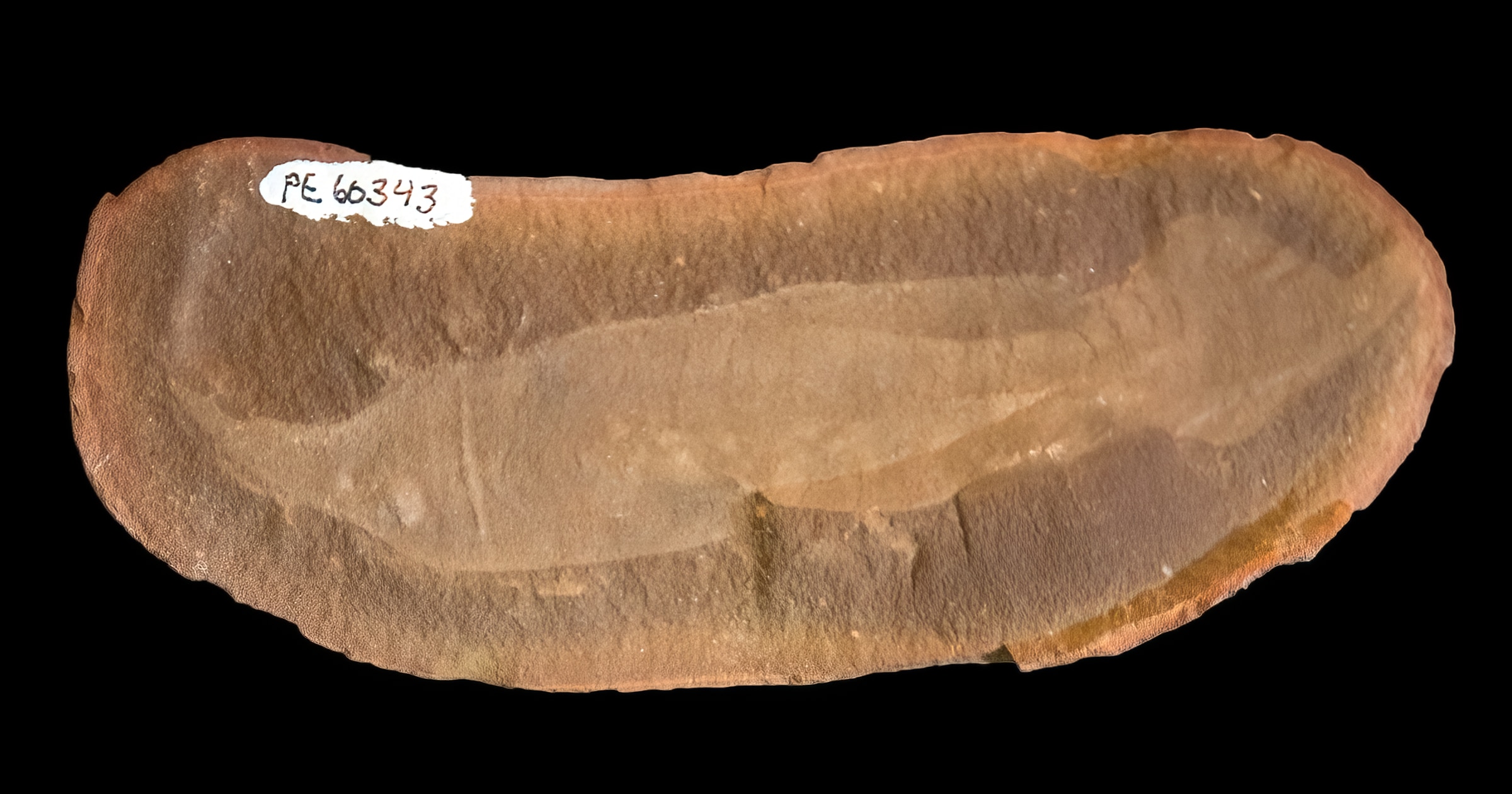 Evolution
Evolution
 Paleontology
Paleontology
Fossil Friday: The Stubborn Mystery of the Tully Monster

Tullimonstrum gregarium is an enigmatic but abundant fossil organism from the famous locality of Mazon Creek, which is dated to a Carboniferous age of about 307 million years. The Tully monster, named after its discoverer the amateur fossil collector Francis Tully, has been designated as the official state fossil of Illinois, but it has puzzled scientists for more than 50 years since its first description by Richardson (1966).
Tullimonstrum is a relatively large (about 13 inch), soft-bodied bilaterian animal with an apparently segmented body, unpaired fins, a pair of long stalked eyes, and a long proboscis terminating in a toothed pincer-mouth. Based on the same evidence of thousands of fossils, different scientists have identified Tullimonstrum in dozens of studies either as a relict from the strange Cambrian phyla, anomalocarid-like or rather Opabinia-like arthropod, annelid worm, mollusk, tunicate, or conodont, but until recently never as a vertebrate. A few years ago, two high-profile studies, published in the prestigious journal Nature and involving 22 scientists, surprisingly claimed to finally have solved the mystery. They identified Tullimonstrum not only as a vertebrate (Clements et al. 2016) but more precisely as a relative of modern lampreys (McCoy et al. 2016).
A Very Comprehensive Analysis
These experts based their results on a very comprehensive analysis of more than 1,200 museum specimens. But just a year later a team of seven eminent paleontologists published a new study (Sallan et al. 2017), based on the very same fossil evidence, which strongly disputed this identification as vertebrate and lamprey, as well as the detailed interpretations of the different body structures as trilobed brain, gill pouches, chorda, myomeres, and fin rays. These authors boldly stated that “the ‘Tully Monster’ is not a vertebrate,” and suggested that alternative identifications as mollusk, anomalocarid, or non-vertebrate deuterostome (e.g., tunicate larva) are more congruent with the data. While Clements et al. (2016) found the melanosome structure of the eyes of Tullimonstrum to prove a vertebrate affinity, a synchrotron spectroscopic analysis of the eye pigments by Rogers et al. (2019) found them more similar to those of cephalopod mollusks.
Now, a new paper by a team of five Japanese scientists has published a micro-CT analysis of 153 fossils of the Tully monster (Mikami et al. 2023). These authors also came to the conclusion that it is definitely not related to vertebrates, but represents an invertebrate of unknown affinity.
How Much Confidence?
This is yet another case where groups of renowned scientists, who all look at the very same evidence of numerous well-preserved fossils, can neither agree upon the identification of the preserved body structures nor even the phylum to which the animal should be attributed. How much confidence should we really place in such dubious fossil evidence when it is boldly claimed to prove Darwinian evolution as a fact or to represent long-sought “missing links”?
References
- Clements T, Dolocan A, Martin P, Purnell MA, Vinther J & Gabbott SE 2016. The eyes of Tullimonstrum reveal a vertebrate affinity. Nature 532(7600), 500–503. DOI: https://doi.org/10.1038/nature17647
- McCoy VE, Saupe EE, Lamsdell JC, Tarhan LG, McMahon S, Lidgard S, Mayer P, Whalen CD, Soriano C, Finney L, Vogt S, Clark EG, Anderson RP, Peterman H, Locatelli ER & Briggs DEG 2016. The ‘Tully monster’ is a vertebrate. Nature 532(7600), 496–499. DOI: https://doi.org/10.1038/nature16992
- Mikami T, Ikeda T, Muramiya Y, Hirasawa T & Iwasaki W 2023. Three-dimensional anatomy of the Tully monster casts doubt on its presumed vertebrate affinities. Palaeontology 66(2):e12646. DOI: https://doi.org/10.1111/pala.12646
- Richardson ES Jr 1966. Wormlike Fossil from the Pennsylvanian of Illinois. Science 151(3706), 75–76. DOI: https://doi.org/10.1126/science.151.3706.75-a
- Rogers CS, Astrop TI, Webb SM, Ito S, Wakamatsu K & McNamara ME 2019. Synchrotron X-ray absorption spectroscopy of melanosomes in vertebrates and cephalopods: implications for the affinity of Tullimonstrum. Proceedings of the Royal Society B 286(1913):20191649, 1–8. DOI: https://doi.org/10.1098/rspb.2019.1649
- Sallan L, Giles S, Sansom RS, Clarke JT, Johanson Z, Sansom IJ & Janvier P 2017. The ‘Tully Monster’ is not a vertebrate: characters, convergence and taphonomy in Palaeozoic problematic animals. Palaeontology 60(2), 149–157. DOI: https://doi.org/10.1111/pala.12282
